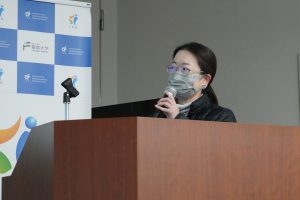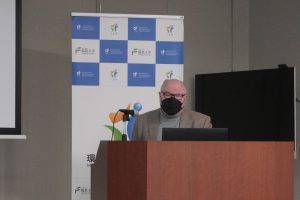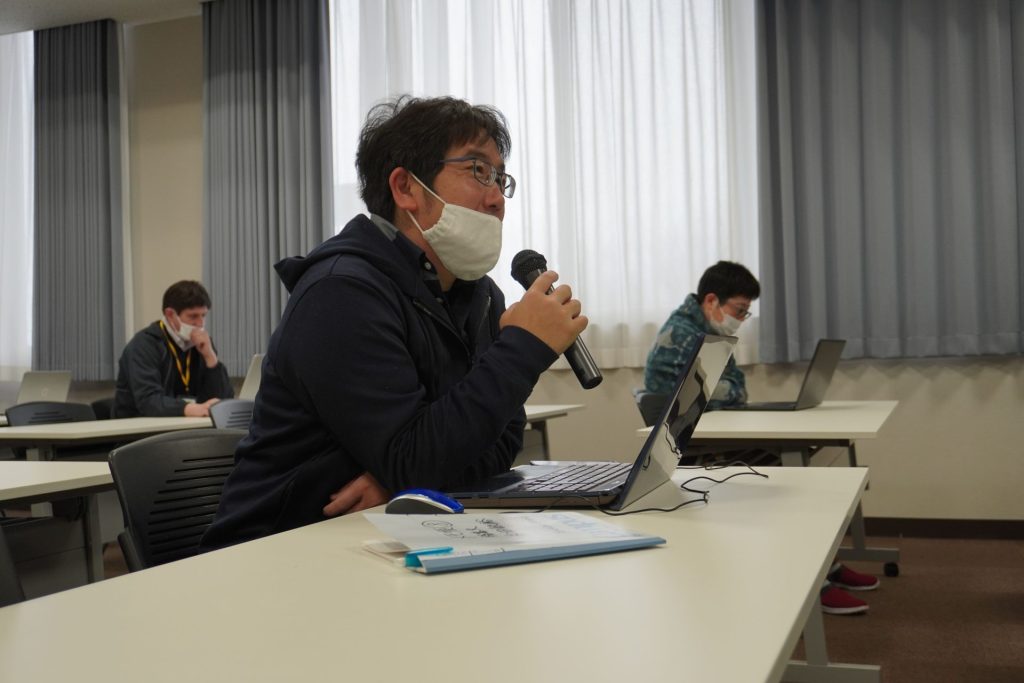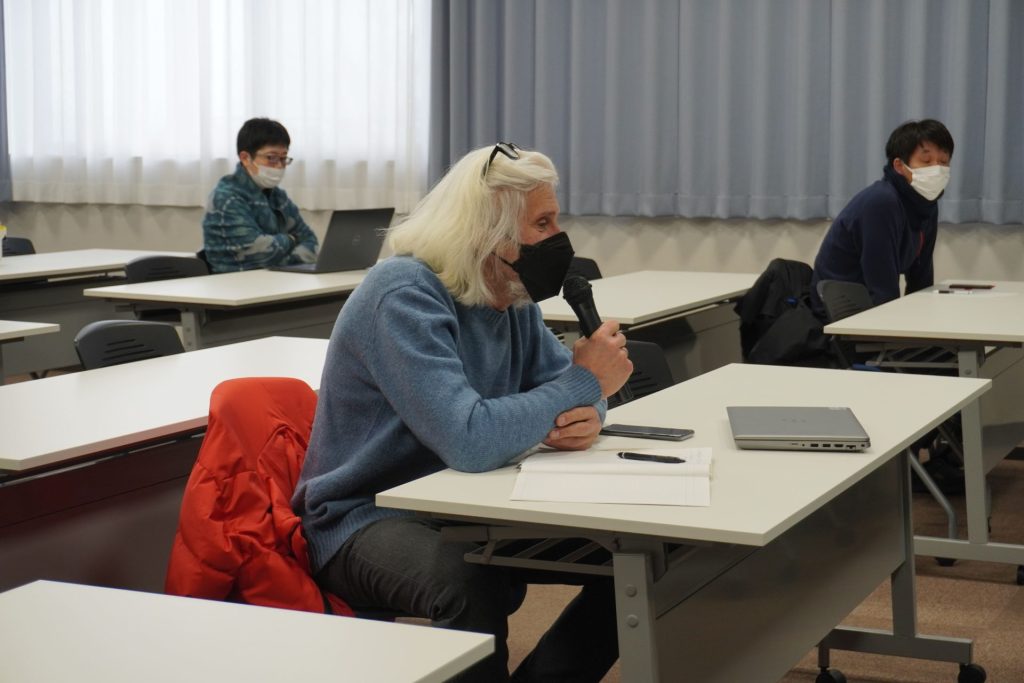January 30, 2023 The 9th IER seminar was held. <Project Lecturer Ishiniwa and Project Professor Konoplev>
Date & Time
January 30, 2023 14:00~15:00
Speaker
Project Lecturer, ISHINIWA Hiroko
Project Professor, Alexei KONOPLEV (Presentation order)
Presentation title
Genomic analysis of radiation effects on field mice in the difficult-to-return zone.(Ishiniwa)
Seasonal variations of radiocesium (r-Cs) in aquatic environment and their mechanisms.(Konoplev)
Institute of Environmental Radioactivity (IER) regularly holds the IER seminar in which the faculty members report on their research results, with the aim of facilitating their research activities and promoting communication.
In the 9th IER seminar of this fiscal year that held on January 30, 2023, two researchers gave presentations on their research activities and results. The seminar was attended by 29 researchers and students.
The first presentation was given by Project Lecturer Ishiniwa. Radiation induces DNA mutations. Since the location of mutations is considered to be random and with no regularity, it is necessary to examine the entire genome to truly assess the effects of radiation on the DNA of organisms, but it is expensive and difficult to analyze all of the genome. There are also problems in data analysis: genome size varies among animal species, and genome sequence information on wildlife is fragmented, unintegrated and difficult to handle.
In order to clarify the effects of radiation on field mice living in the difficult-to-return zone, we have studied a method to extract and analyze only those gene regions from the genome that have functions related to the survival of the organisms.


Project Professor Konoplev presented a talk on Seasonal variations of radiocesium (r-Cs) in aquatic environment and their mechanisms.
He showed some research results for the Chornobyl NPP cooling pond, Glubokoe lake in Chernobyl exclusion zone and oligotrophic lake Vortsee in Germany, as well as for the Okuma ponds, Abukuma River and data for some other rivers of FDNPP contaminated area published by Nakanishi and Sakuma (2019). For all water bodies it was found that activity concentration of dissolved r-Cs in summer is essentially higher than in winter.
It was suggested that there are two basic mechanisms responsible for regular seasonal variations of dissolved Cs in water bodies: 1) increase of desorption rate due to increase of water temperature, and 2) generation of ammonium as a result of organic matter decomposition in anoxic conditions.
In Fukushima rivers, which are mostly shallow and fast flowing, ammonium concentration is usually negligible. For them the predominant factor of dissolved r-Cs seasonality is temperature dependence of r-Cs desorption. For stagnated stratified waters of ponds, lakes and dam reservoirs in anoxic conditions, the role of ammonium in r-Cs mobilization can be comparable with that of water temperature or even be prevailing.
After the presentation, various questions and opinions were exchanged among participants.


